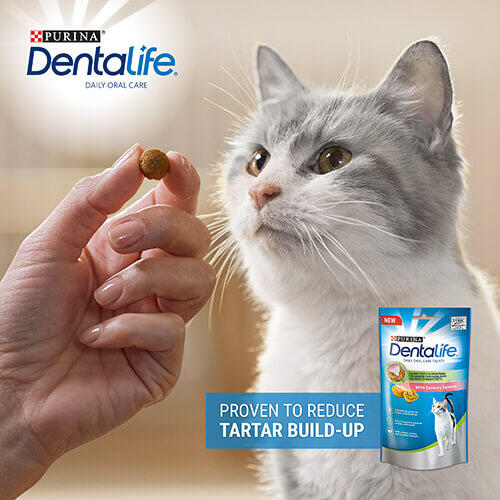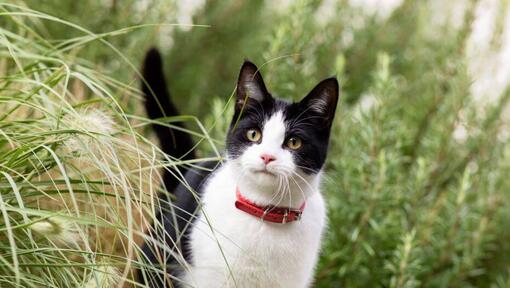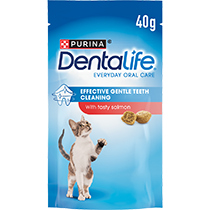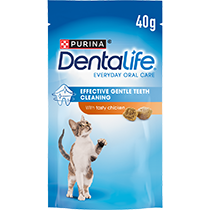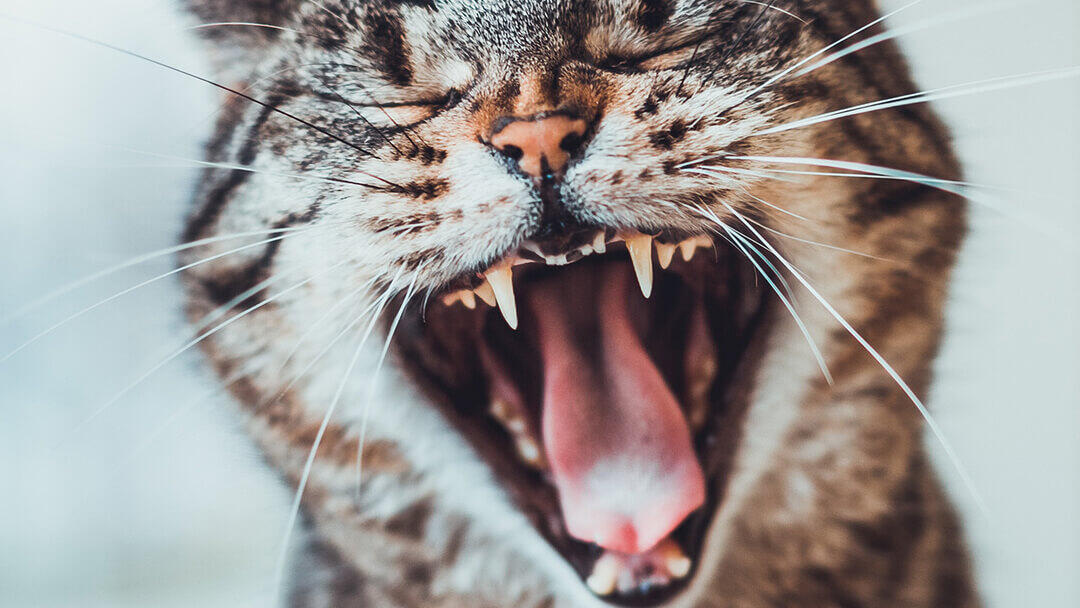

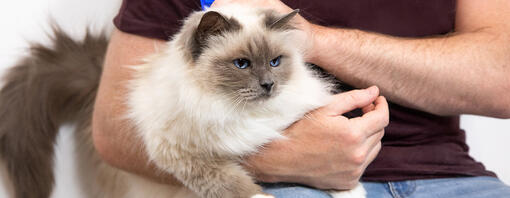
Gingivitis is a common dental problem that affects a number of different animals, including cats.
If left untreated it can develop and become a more serious issue known as periodontal disease. Keep reading to learn about the causes of gingivitis in cats along with how to spot the signs of the disease.
What is gingivitis in cats?
Gingivitis is an inflammation of the gums which can result in sore, red and swollen gums. It can be painful and lead to more serious dental problems if left untreated.
Gingivitis in cats occurs when a build-up of sticky residue called plaque begins to form on your cat’s teeth. This sticky plaque comes from the sugars in your cat’s diet. As more and more plaque builds up it will begin to grow underneath your cat’s gums. Eventually swelling and inflammation will appear which will cause the gums to turn red and become painful.
What are the symptoms of gingivitis in cats?
A cat with gingivitis may demonstrate a number of symptoms. Make sure you keep an eye out for the below to determine if your cat may be suffering from the disease.
1. Red and inflamed gums
As mentioned earlier one of the most common symptoms of gingivitis in cats is inflamed gums. Inflammation may cause your cat’s gums to swell and become red, which will often cause pain. This makes it important to check your cat’s gums regularly.
Looking in a cat’s mouth can be tricky so make sure your cat feels as at ease as possible by comforting them and handling them gently. If your cat is struggling and uncomfortable let them go and try again later. If you don’t do this and try to force your cat to stay still while you check their teeth, it could scare them and make them less likely to cooperate next time.
2. Showing signs of pain and discomfort
If your cat does not seem themselves it may be a sign that they are in pain and suffering with an issue such as gingivitis. Showing pain when eating is another common symptom of gingivitis in cats.
Cats who are suffering from this problem may try to eat and chew from only one side of their mouth. This may be the side with less swelling or a side not yet affected by the gum disease. In some cases, a cat may stop eating altogether due to the discomfort. This can lead to further issues such as weight loss if left untreated.
This being said, it is important to remember that cats are very good at hiding signs of pain - which unfortunately can make it difficult to spot - and may continue to eat even when they are in significant pain.
3. Bad breath
Bad breath is another common symptom of dental diseases like gingivitis. If you notice your cat’s breath has started to smell worse it may be a sign of gingivitis. This is not always the case though, so for more information around feline halitosis and its causes check out our bad cat breath guide.
Causes of gingivitis in cats
There are a number of different reasons why a cat may have developed gingivitis and multiple causes often contribute. Sometimes different issues combined with one another can lead to the disease.
1. A poor dental health routine
A poor dental health routine can often be the cause of gingivitis in cats. As an owner, you should make sure you have a good dental health routine set up to care for your cat’s teeth and decrease the chances that they’ll suffer from a dental health issue.
Cleaning your cat’s teeth regularly and feeding them suitable food are both important steps in caring for your cat’s dental health. Checking their mouths regularly is another important step to take to help ensure you spot any dental problems quickly. If you’re looking for a way to help you care for your cat’s teeth you could try feeding them our range of Dentalife®?cat treats. They are not only a great way to reward your cat but their porous texture is scientifically proven to help effectively clean their teeth.
2. Crowded mouth
A cat suffering from a mouth crowded by teeth is often more susceptible to dental diseases such as feline gingivitis. This is because the crowding makes it easier for plaque to grow and form on a cat’s teeth.
3. Breed disposition
Some cat breeds are more prone to dental problems than others. Breeds with very short noses such as Persians or Chinchillas are more likely to suffer from overcrowding issues due to the size and shape of their mouth. This can lead to a whole host of different dental issues including gingivitis in cats.
4. Getting older
Dental problems are more common in older cats than those that are younger. This is because gradually over time as a cat ages plaque will build up. If you suspect your cat is suffering from gingivitis you should take them to your vet for a check-up just to be sure. There your vet will be able to diagnose your cat and provide you with the best course of action to take to treat them.

Shop the Dentalife Cat range:
Related articles by Dentalife



